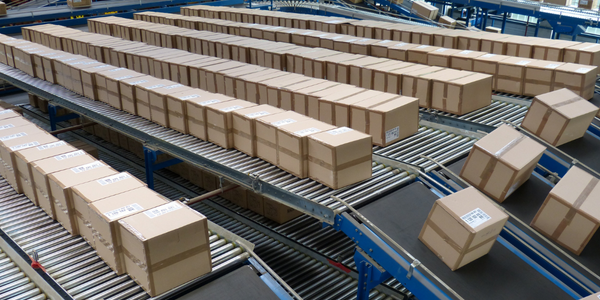Download PDF
Streamlining Artwork Approval and Management with DALIM ES: A Case Study on ISDIN
Applicable Industries
- Packaging
- Retail
Use Cases
- Intelligent Packaging
- Inventory Management
The Challenge
ISDIN, an international cosmetics and dermatology retail brand, was facing a challenge in streamlining their packaging artwork review and lifecycle management. With a wide product range extending throughout many countries around the world, ISDIN needed an integrated platform to streamline its text and artwork management review. The review process involved many areas in its company, such as marketing, QA, its technical office and regulatory department. Reviews also involved their external partners, such as printers, packaging suppliers and third-party manufacturers. The increasing workload due to market success necessitated a solution that could provide real-time updates on the status of each project, including details such as pending approvals.
About The Customer
ISDIN is an international laboratory specializing in innovative solutions for major dermatological needs and pathologies. The company is a major player in the Spanish dermatological market and operates in over 40 countries, primarily across Asia, Europe, Latin America and South Africa. Based in Barcelona, Spain, ISDIN reported a turnover from international activities of more than 200M EUR in 2018. The company employs more than 900 people and operates in the cosmetic and pharmaceutical sector. ISDIN purchased DALIM SOFTWARE products for packaging artwork lifecycle management and Digital Asset Management (DAM).
The Solution
ISDIN adopted DALIM ES (Enterprise Solution) to accelerate their artwork approval process. The decision to select DALIM ES was influenced by recommendations from other colleagues in the cosmetic industry and the comprehensive solution it offered for a company with the size and complexity of ISDIN. DALIM ES provided an easy-to-understand platform for both the user and administrator to track the exact status of every piece of art. The software also included a comparison tool for images, allowing the company to check between different versions of artwork and text, a process that had previously been very time-consuming. Additionally, the software was easy to customize, allowing the administrator to tailor both the user environment and workflow as needed over time.
Operational Impact
Quantitative Benefit
Related Case Studies.

Case Study
Improving Production Line Efficiency with Ethernet Micro RTU Controller
Moxa was asked to provide a connectivity solution for one of the world's leading cosmetics companies. This multinational corporation, with retail presence in 130 countries, 23 global braches, and over 66,000 employees, sought to improve the efficiency of their production process by migrating from manual monitoring to an automatic productivity monitoring system. The production line was being monitored by ABB Real-TPI, a factory information system that offers data collection and analysis to improve plant efficiency. Due to software limitations, the customer needed an OPC server and a corresponding I/O solution to collect data from additional sensor devices for the Real-TPI system. The goal is to enable the factory information system to more thoroughly collect data from every corner of the production line. This will improve its ability to measure Overall Equipment Effectiveness (OEE) and translate into increased production efficiencies. System Requirements • Instant status updates while still consuming minimal bandwidth to relieve strain on limited factory networks • Interoperable with ABB Real-TPI • Small form factor appropriate for deployment where space is scarce • Remote software management and configuration to simplify operations

Case Study
How Sirqul’s IoT Platform is Crafting Carrefour’s New In-Store Experiences
Carrefour Taiwan’s goal is to be completely digital by end of 2018. Out-dated manual methods for analysis and assumptions limited Carrefour’s ability to change the customer experience and were void of real-time decision-making capabilities. Rather than relying solely on sales data, assumptions, and disparate systems, Carrefour Taiwan’s CEO led an initiative to find a connected IoT solution that could give the team the ability to make real-time changes and more informed decisions. Prior to implementing, Carrefour struggled to address their conversion rates and did not have the proper insights into the customer decision-making process nor how to make an immediate impact without losing customer confidence.

Case Study
IoT Data Analytics Case Study - Packaging Films Manufacturer
The company manufactures packaging films on made to order or configure to order basis. Every order has a different set of requirements from the product characteristics perspective and hence requires machine’s settings to be adjusted accordingly. If the film quality does not meet the required standards, the degraded quality impacts customer delivery causes customer dissatisfaction and results in lower margins. The biggest challenge was to identify the real root cause and devise a remedy for that.

Case Study
Digital Retail Security Solutions
Sennco wanted to help its retail customers increase sales and profits by developing an innovative alarm system as opposed to conventional connected alarms that are permanently tethered to display products. These traditional security systems were cumbersome and intrusive to the customer shopping experience. Additionally, they provided no useful data or analytics.

Case Study
Zenon the Ideal Basis for An Ergonomic HMI
KHS develops and produces machines and equipment for filling and packaging in the drinks industry. Because drinks manufacturing, filling and packaging consist of a number of highly complex processes, the user-friendly and intuitive operation of equipment is increasingly gaining in significance. In order to design these processes as simple as possible for the user, KHS decided to introduce a uniform, transparent and standardized solution to the company. The HMI interface should meet the requirement for people with different qualifications and enable them to work on a standard platform.






